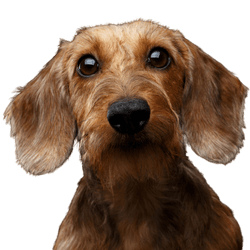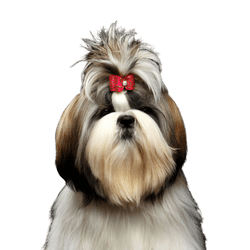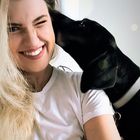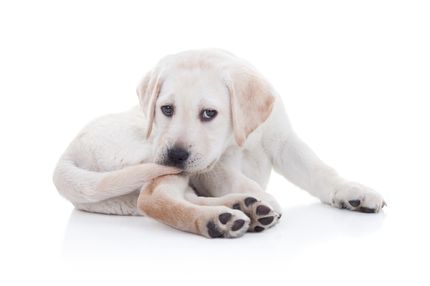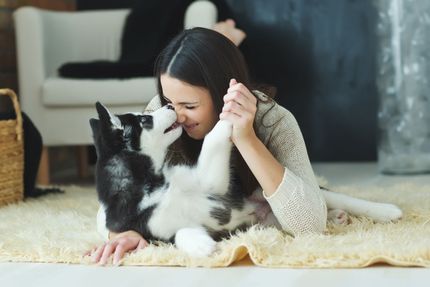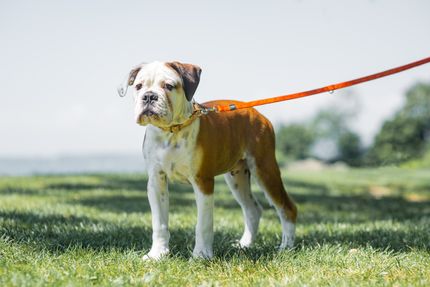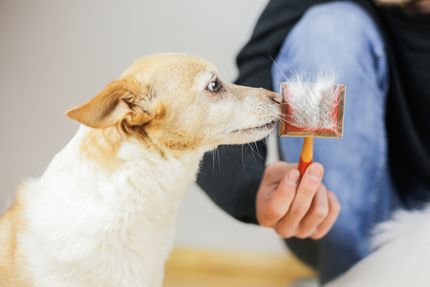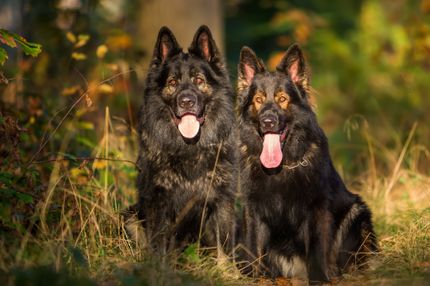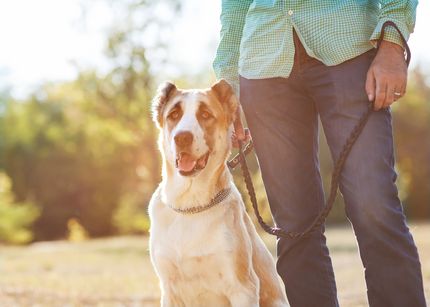Facts & Origin
Origin of the Schweenie: A modern hybrid breed with charm
The Schweenie is a so-called designer dog breed that originated from the deliberate crossing of a Shih Tzu with a Dachshund. Like many hybrid breeds, the Schweenie does not have a long history, but has been deliberately bred in recent decades - primarily in the USA and Great Britain. The aim of this crossbreeding was to combine certain character and physical traits of both original breeds: the friendly, people-oriented nature of the Shih Tzu with the alert, lively nature of the Dachshund.
The breeding of the Schweenie is part of a larger trend in which mixed breeds with deliberately selected parent animals are marketed as independent "brand breeds". Unlike recognized pedigree dogs, however, there are no fixed standards - neither in appearance nor in behaviour. This makes each Schweenie unique in its own way, but also makes it difficult to predict its characteristics.
Name synonyms and spellings
As with many designer dogs, the name Schweenie is made up of the names of the two original breeds: "Shih" (for Shih Tzu) and "weenie " (a colloquial term for Dachshund, based on "Wiener Dog"). Depending on the region and spelling, there are also variants such as Schweeni, Shihweenie, Shiweenie or even Shih Tzu Dachshund Mix.
These are not protected breed names, which is why breeders and owners use the term freely, which can sometimes lead to confusion. Schweenies can also vary greatly in appearance - some look more like the Shih Tzu, while others have typical Dachshund characteristics such as the elongated build or low-set ears.
Criticism of hybrid breeds such as the Schweenie
Despite their popularity, hybrid breeds such as the Schweenie are also subject to criticism. A key argument put forward by animal welfare organizations and veterinarians is that many of these dogs are not bred in a controlled manner. Unlike recognized breeds with breeding associations and health checks, designer dogs are often bred as hobby dogs or even in illegal puppy factories, where health aspects are not a priority.
Another problem is the unpredictability of genetic traits. Buyers often expect a certain character or appearance - but with mixed breeds the range is wide. A Schweenie can therefore be a calm family dog, but also a stubborn hunter with a strong hunting instinct, depending on which genes dominate. Behavioral abnormalities, hereditary diseases and physical problems (such as back problems due to the dachshund component) are just as possible as with purebred dogs - but unfortunately often less well documented.
There is also criticism that the term "designer dog" creates a commercial incentive to sell mixed breeds at a high price, even though there are numerous similar dogs waiting for a home in animal shelters. Anyone interested in a Schweenie should therefore take a close look at the original breeds, the possible characteristics and, above all, the reputability of the kennel.
| Alternate Name | Schweeni, Shiweenie, Shihweenie |
| Origin | Germany - Tibet |
| Life expectancy | 10 - 16 years |
| Care requirements | low-maintenance - high-maintenance |
| Activity level | average - low |
| FCI group | not recognised |
| AKC group | not recognised |
| KC group | not recognised |
More Dachshund mixes
More Shih Tzu mixes
Attitude, character and temperament of the breed
Possible character traits
The character of a Schweenie can vary greatly, as it is made up of two very different breeds. However, a combination of affection, playfulness and a certain stubbornness is typical. The Shih Tzu is considered a friendly, calm social dog that forms particularly close bonds with its caregivers and likes to be pampered. The Dachshund, on the other hand, is known for its eagerness to hunt, courage and independence - characteristics that can also be seen in the Schweenie.
Many Schweenies are extremely people-oriented, prefer to accompany their family everywhere and love to be part of everyday life. At the same time, however, they can also show a stubborn character and want to make their own decisions - especially if the Dachshund part dominates. Clear, loving leadership is therefore required when training them. Consistency, patience and playful motivation help to get the best out of the Schweenie.
Depending on their individual disposition, the Schweenie can also show a watchful instinct, alert to visitors or become attentive to noises. Nevertheless, they are rarely aggressive and - with the right socialization - make good family dogs.
Diseases & care
As with all dog breeds - especially mixed breeds - certain health problems can also occur in the Schweenie. By mating Dachshunds and Shih Tzu, it is possible for hereditary diseases of both breeds to be passed on.
For example, dachshunds can inherit back problems (herniated discs) due to their elongated build - a disease known as "dachshund paralysis". Shih Tzu dogs, on the other hand, can suffer from respiratory diseases (due to their short muzzle), eye problems or dental anomalies. Both breeds are also prone to allergic reactions, skin problems and genetic joint problems such as patellar luxation.
Grooming depends heavily on the coat type, which can vary. Many Schweenies have a medium-length, dense coat that should be brushed and groomed regularly to prevent matting. Especially those with the silky Shih Tzu coat sometimes require professional grooming or occasional shearing. The eyes and ears should also be checked and cleaned regularly, as they are prone to inflammation in small breeds.
All in all, if you keep a Shih Tzu, you should be prepared to schedule regular vet checks, dental care and grooming - the effort involved is manageable, but should not be underestimated.
What does this hybrid look like?
The Schweenie is a hybrid breed - and this is reflected in its varied appearance. There is no uniform breed standard, so the appearance can vary greatly - even within the same litter. Some Schweenies look more like long-legged Shih Tzus with a slightly elongated back, while others are more reminiscent of a Dachshund with fluffy fur and a round head.
Typical is usually a compact body shape, often with a slightly elongated back (from the Dachshund), short to medium-length legs, and a friendly, expressive face. The eyes are usually large and dark, the ears can either be droopy like the Dachshund or somewhat shorter and hairier like the Shih Tzu.
The coat varies greatly: it can be short, medium-long or long, usually soft and dense, occasionally also slightly wavy. In terms of color, anything is possible - from black, brown, gold, white or grey to multi-colored or piebald. Some Schweenies have the typical Shih Tzu mask on their face, others have the single-colored Dachshund coat.
What they all have in common is a charming, often slightly mischievous expression that emphasizes their personality. They often look like little cuddly dogs - with a good dose of temperament.
| Fur length | short - medium |
| Fur | rough-haired - flat coated |
| Ear shape | Floppy Ear |
| Tail | short - rolled up |
| Anatomy | strong, rugged |
| Size ♀ | 17 - 28 cm |
| Weight ♀ | 4 - 9 kg |
| Size ♂ | 17 - 28 cm |
| Weight ♂ | 4 - 9 kg |
| Suitable For | Seniors, Beginner, Seniors |
Known Diseases
Dachshund Paralysis
By dachshund paralysis (discopathy) veterinarians mean paralysis of the limbs in dogs.
Overweight
Often, unfortunately, the dogs very much under excess weight. But the dogs themselves are never to blame!
Disc problems
Herniated disc in dogs (discopathy). Herniated discs or dachshund paralysis cause dogs severe pain.
Eye infections
Chronic eye infections can be very painful in dogs and can be treated with medication. In rare cases, the cornea must be treated.
Breathing problems
Dogs with shortened muzzles can often experience respiratory problems.
Patellar luxation
Patellar luxation is the term used to describe a displacement of the kneecap, which is one of the most common causes of lameness in dogs.
Knee injuries
Some breeds, unfortunately, especially suffer from knee injuries of various kinds.
FAQ
-
There is no uniform breed standard, so the appearance can vary greatly - even within the same litter. Some Schweenies look more like long-legged Shih Tzus with a slightly elongated back, while others are more reminiscent of a Dachshund with fluffy fur and a round head.
-
A Schweenie usually weighs between 3 and 7 kg and is around 20 to 25 cm high.
-
The average life expectancy of a Dachshund-Shih Tzu mix is 12 to 16 years.
-
Yes, a Schweenie can be a good family dog. They generally get on well with children and other pets and are loyal, loving companions.
-
No, a Dachshund-Shih Tzu mix does not need a lot of exercise. They are a relatively low-energy breed and only need a moderate amount of exercise.
